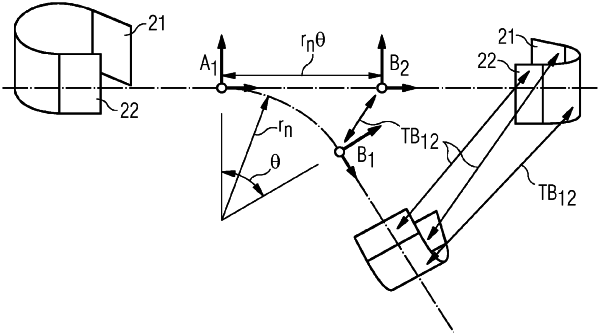| CPC G06F 30/00 (2020.01) [G06F 2111/04 (2020.01); G06F 2113/24 (2020.01)] | 16 Claims |

|
1. A method of manufacturing a product by modifying a computer aided design (CAD) system model for modelling an object, generating manufacturing instructions for manufacturing the object or making modifications to the design of the object or the manufacturing instructions via a data processing system; the method comprising:
receiving a first dataset of co-ordinates representing a flat stock sheet material, and a second dataset of co-ordinates representing a product to be manufactured from the sheet material;
receiving 2D constraints for the flat stock sheet material and 3D constraints for the product to be manufactured from the sheet material to be applied to any changes to the first dataset or the second dataset;
receiving a modification to be applied to either the first dataset or the second dataset;
combining at least one of the 2D and 3D constraints with the modification to produce a constrained modification for each of the flat stock sheet material and product to be manufactured from the sheet material;
solving the constrained modification in 2-dimensions and in 3-dimensions, to determine whether a solution exists in which all constraints are met and if the outcome of the solving does not meet certain predetermined requirements for the sheet material to be processed during manufacturing then that modification is not applied;
forming a first coordinate system for the flat stock sheet material;
forming a second coordinate system for the product to be manufactured from the sheet material;
determining a transform based on a difference between a coordinate of the flat stock sheet material in the first coordinate system and a corresponding coordinate of the product to be manufactured from the sheet material in the second coordinate system;
if the solve is successful, simultaneously applying the constrained modification to each of the first dataset and the second dataset using the transform applying the same relative change to the co-ordinates of each of the flat stock sheet material and the product to be manufactured from the sheet material simultaneously as a relative change between the coordinate of the flat stock sheet material in the first coordinate system and the corresponding coordinate of the product to be manufactured from the sheet material in the second coordinate system; and,
storing updated first and second datasets representing the flat stock sheet material and the product to be manufactured from the sheet material; or,
if the solve fails, reducing the constraints and returning to the solve step, or terminating the process;
inputting the stored updated second dataset for the product to be manufactured from the sheet material to a computer controlled machine; and
manufacturing the product to be manufactured from the sheet material based on the updated first and second datasets.
|